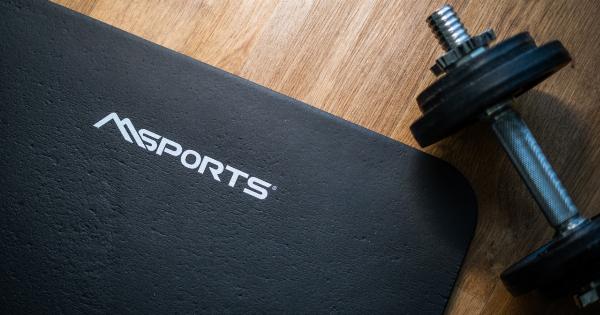After going through a weight loss journey, the ultimate goal is to maintain the achieved weight. Maintenance of weight allows you to enjoy the benefits of a healthy body and prevent regaining the weight back.
While maintaining the weight after dieting can be challenging, it is achievable.
In this article, we will discuss the exercise tips that will help you maintain your weight after dieting.
Set Realistic Goals
Setting realistic goals is the first step towards achieving success in weight maintenance after dieting. Do not set goals that are too unrealistic and out of reach.
Start by making small goals that you can easily achieve, and gradually increase your goals.
For example, you can start with a goal to exercise three times a week for 30 minutes each time and increase the number of days and duration of exercise as you progress.
Strength Training
Strength training is highly recommended for weight management. It helps in building and maintaining lean muscles, which increases the metabolic rate even when at rest.
The increased metabolism helps in burning more calories, thus making it easier to maintain weight.
You can incorporate strength training into your exercise routine by lifting weights, doing bodyweight exercises, or using resistance bands. Aim to exercise the major muscles of the body two to three times a week.
Cardiovascular Exercises
Cardiovascular exercises help in burning calories and increasing the heart rate. These exercises include jogging, cycling, swimming, dancing, and brisk walking. Aim to exercise at moderate intensity for at least 150 minutes per week.
You can break this down into sessions of 30 minutes, five days a week. Alternatively, you can do shorter sessions of 10 to 15 minutes several times a day to achieve the recommended weekly duration.
High-Intensity Interval Training (HIIT)
HIIT is an effective form of exercise that involves alternating between high-intensity and low-intensity exercises.
This form of exercise helps in burning calories even after the workout, as the body continues to burn calories at a higher rate during the resting phase.
A typical HIIT workout can last for about 20 minutes and should be done two to three times a week.
Stay Active Throughout the Day
Staying active throughout the day can help in maintaining weight. Take the stairs instead of the elevator, walk to the local store instead of driving, or stand up and stretch after sitting for a long time.
These little activities increase the energy expenditure, thus helping in burning more calories and maintaining weight.
Get Enough Sleep
Getting enough sleep is essential for weight management. Lack of sleep affects the hormones that regulate appetite, leading to increased hunger and food cravings. This can lead to overeating and weight gain.
It is recommended to get at least seven to eight hours of sleep every night to help in maintaining weight.
Monitor Your Progress
Monitoring your progress is crucial in weight maintenance. Keep track of your weight regularly and make adjustments to your exercise routine and diet if needed.
You can also use wearable devices such as fitness trackers to monitor your daily activity level and calorie burn. This makes it easier to track your progress and make necessary adjustments.
Stay Hydrated
Staying hydrated is essential for weight management. Drinking enough water helps in regulating appetite and reducing food cravings.
It is recommended to drink at least eight glasses of water every day to stay hydrated. You can also consume other low-calorie fluids such as herbal tea, fruit-infused water, or sparkling water.
Be Consistent
Consistency is essential for weight maintenance. Make exercise and healthy eating a habit rather than an occasional event. Aim to exercise regularly and stick to a healthy diet plan.
Do not get discouraged by the occasional setbacks but instead, focus on getting back on track. With consistency, you can achieve and maintain your weight loss goals.
Conclusion
Maintaining weight after dieting requires consistent exercise and healthy eating habits. Incorporate strength training, cardiovascular exercise, HIIT, and other physical activities into your exercise routine.
Remember to set realistic goals, monitor your progress, stay hydrated, and get enough sleep. With these exercise tips, you can achieve and maintain your desired weight.































